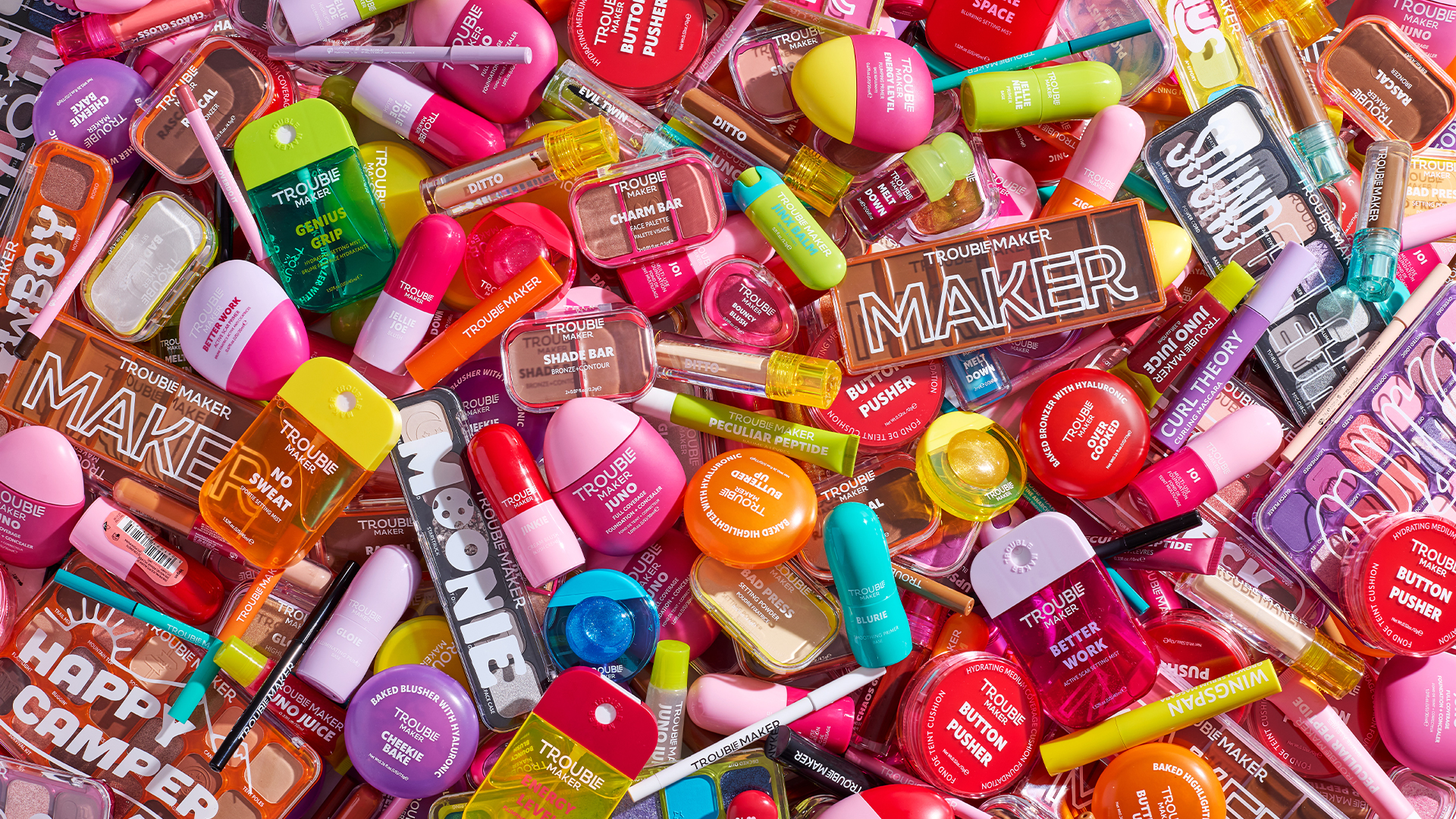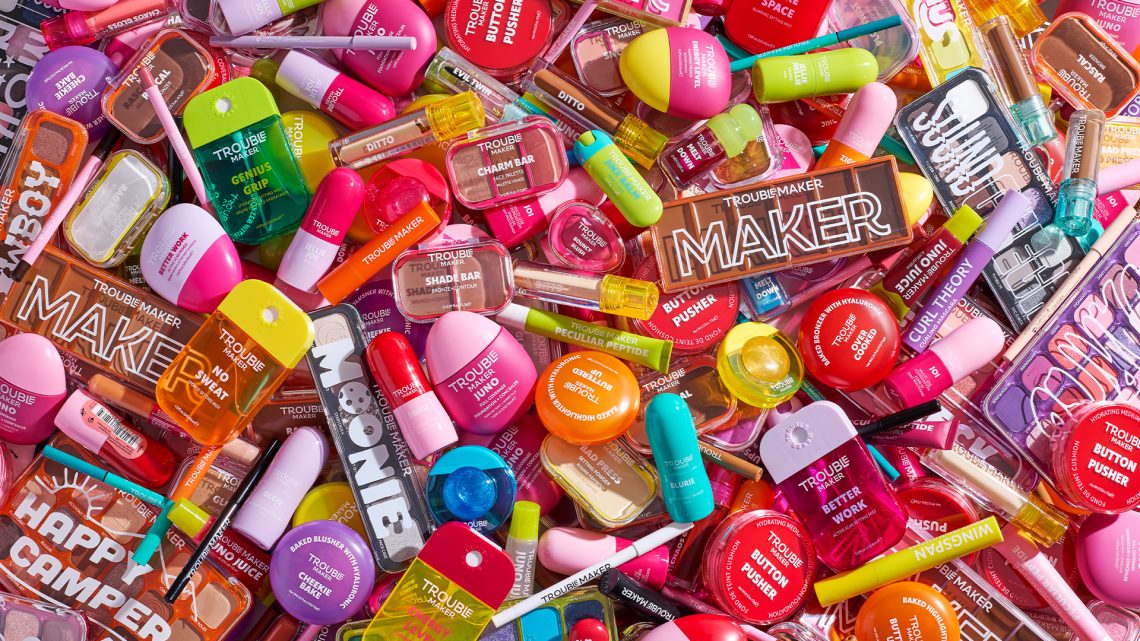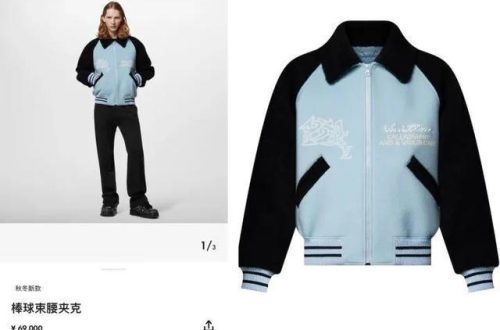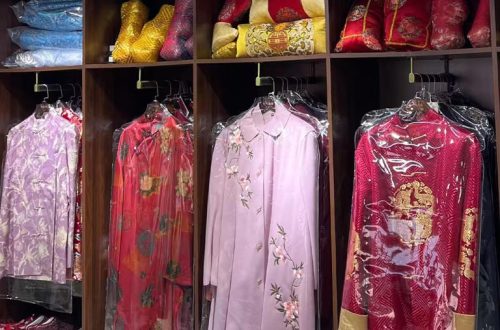

Since his departure from Revolution Beauty in 2022, Adam Minto has been making a quiet but calculated return to the beauty industry – first with the launch of brand incubator Rebel Rebel, and now with a new makeup brand poised to disrupt the industry once again.
After teasing the brand through a series of recent Instagram posts, anticipation has been building across the industry – and now, TheIndustry.beauty brings you all the details…
We sat down with Adam, his co-founder and wife Sally, and creative director Alex Dignum to delve into the beauty brand’s launch, its unique concept, how they’re tapping into a gap in the market and emerging trends, and more.
Let’s start at the beginning (of their comeback)…
After a soft launch, Adam and Sally officially announced their return to the beauty industry earlier this year with Rebel Rebel – a business venture that offers an ecosystem supporting brands they invest in, acquire, or build from the ground up.
Built on “industry knowledge, strong connections, and a clear route to market with key retailers”, Rebel Rebel has supported brands like Dr. PAWPAW and Carbon Theory. From the very beginning, however, the venture also set out to launch its own portfolio of brands – yes, multiple brands. The first of these, Trouble Maker, makes its highly anticipated debut this week.
With a unique concept, Adam, Sally, and their wider team have kept the brand identity largely under wraps – until now.
“We have got a new generation to speak to. Gen Alpha – the oldest of whom turns 15 this year – is just starting to discover makeup. For the past few years, all we have really seen is the ‘clean girl’ aesthetic. But now is a time of experimentation. We believe affordable brands aren’t keeping up with trends fast enough, and the real innovation is coming from brands that are less accessible to this audience. So, we see a genuine need for something new – and the retailers agree,” Sally tells TheIndustry.beauty.
The result is a brand created specifically for this generation, featuring products formulated to meet their needs. Its concept draws inspiration from current trends, as well as the evolving ways both the industry and this generation are moving.
“You look down the makeup aisle and a lot of the brands just all look the same. They have the same colours, the same branding. So, Trouble Maker will be causing trouble in the aisle. It will be very colourful and very different – in its branding, the product itself, and in marketing. So, at every stage, it will be very fresh,” adds Alex, who worked alongside Adam and Sally at Revolution Beauty.
And it’s not just colour making a comeback – the brand is also tapping into rising demand for collectibility and accessorising. Take Labubu, for example, a trend that has seemingly appeared out of nowhere, demonstrating this demand. This concept plays a key role in Trouble Maker’s strategy, promising a fun and unique way to connect with Gen Z and Gen Alpha shoppers.
“Another standout feature is that Trouble Maker will speak through products that have personalities and a backstory, which really hasn’t been done before,” claims Adam.
“We are bringing the fun back into it, as we believe fun and collectibility are really on trend right now, and people want something different. So, when you see the packaging, it’s very colourful, lovable, and equally collectible.”
Speaking further on this, Alex adds: “It is the first brand in beauty where the product introduces itself. Instead of us holding up a foundation and saying, ‘This is a foundation, it contains hyaluronic acid, blah, blah, blah,’ each product will come with a name, a personality, a backstory, a favourite colour, a birthday, and a sense of humour. They will communicate this through various social media content, really bringing them to life.
“All of these characters will interact with each other, adding a collectability element. It will feel like a friendship group – with some products as friends, others as enemies – each relationship making sense with their formula and explaining what the product does,” she adds.
“With both Adam and I having a background in product, it was important to position Trouble Maker as a product-first brand, rather than marketing-first. For us, the product is the marketing. The colour shines through on our stands, in our branding, and from the product itself – in both packaging and formula. It’s very well-rounded, full of character, colour, and fun.”
As we eagerly await this concept to unfold following the brand’s initial launch this week, it aims to engage both its target audience and the wider beauty industry to introduce something truly new.
On the product front, Trouble Maker will debut with nearly 300 SKUs – ranging from foundations, concealers, and face palettes to brow products, lip items, primers, setting mists and more. “It’s your makeup kit essentials, alongside some fantastic trend-driven products like lip oils and cushion foundations – all at an affordable price point,” Adam explains. There’s also accompanying accessories.
Product development and brand engagement will be further driven by its community through the ‘Trouble Makers Club’ – an insider group where consumers can interact directly with the brand.
“We want our audience to help shape what we do, share what they like and don’t like, and collaborate with us on creating products, trends, and more,” adds Adam.
Affordability is also at the heart of the brand’s mission. Having previously partnered with Superdrug to grow Revolution Beauty, Minto has continued that relationship with Trouble Maker, perfectly aligning with Superdrug’s commitment to accessible beauty. In fact, every product is priced under £10, with the majority falling between £3 and £6 – deliberately positioned to drive value and bring beauty sales back to the high street.
What’s more, Trouble Maker marks Superdrug’s “largest new brand launch ever”, which it expects to generate considerable interest.
The rollout includes an online debut on both Superdrug’s platform and the brand’s own website, with availability in over 400 Superdrug stores nationwide by the end of the year, starting in the coming weeks. Both Adam and Sally describe the launch plan as “aggressive”, and it certainly reflects that ambition.
“The team at Superdrug is always forward-looking and easy to work with. When I say easy, I mean they’re incredibly approachable – there’s no such thing as a bad idea. They’re relentlessly focused on offering their customers newness and never resting on their past successes. We have seen that recently with its new ‘beauty playground’ concept. Having built brands with them before, it was an easy decision for us to continue working together because there is mutual trust and flexibility,” shares Adam.
Adding to this, Sally explains: “I think it’s also important to highlight that Superdrug owns a significant share of the mass-market cosmetics sector. In terms of alignment with our target consumer base, they are absolutely the right partner.”
While this generation may aspire to premium brands, Adam and Sally emphasise that when young shoppers are out in groups, spending £20 on a product is a significant decision. That’s why this brand is positioned “firmly within the pocket money price range”. “It’s actually where we started with Revolution Beauty – affordable, yet delivering trends in a cool and fun way,” Adam reminisces.
“And this isn’t cheap makeup – it’s great makeup, delivered at the right time, with the right trends, and at the right price.”
Alex also notes that trends like Labubu and the rise of accessorising everything “simply do not work if the products are too expensive to collect more than just a few” – a concept that also applies to the brand.
It’s all about making product accessible to as many people as possible. That’s why the brand isn’t just focused on UK domination – it also has global ambitions, with plans for international expansion already underway.
“Fundamentally, we are going global – fast. We’ll be launching with several digital partners around the world to ensure we are present where our customer is, digitally, in other countries, Adam reveals.
“We are following a model focused on building a global brand by selecting one key physical retail partner per country. Social media is global – people share, people see, and trends spread instantly. The digital boom has stretched across the world, so to build a brand that stays in control of itself, you need a clear, intentional strategy for entering those markets. And that’s exactly what we have in place.”
While the UK launch is the immediate focus, the long-term goal is to ensure the “Gen Zalpha” generation feels seen, heard, and – most importantly – actively involved in shaping a brand they can truly feel ownership of, wherever they are in the world.
“We are making trouble, but in a good way,” Sally concludes.





